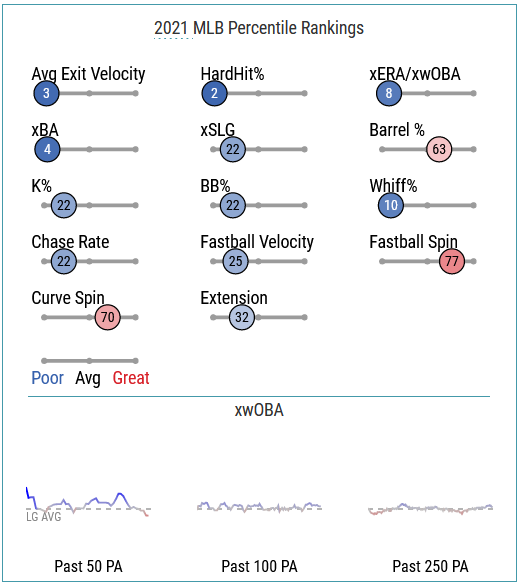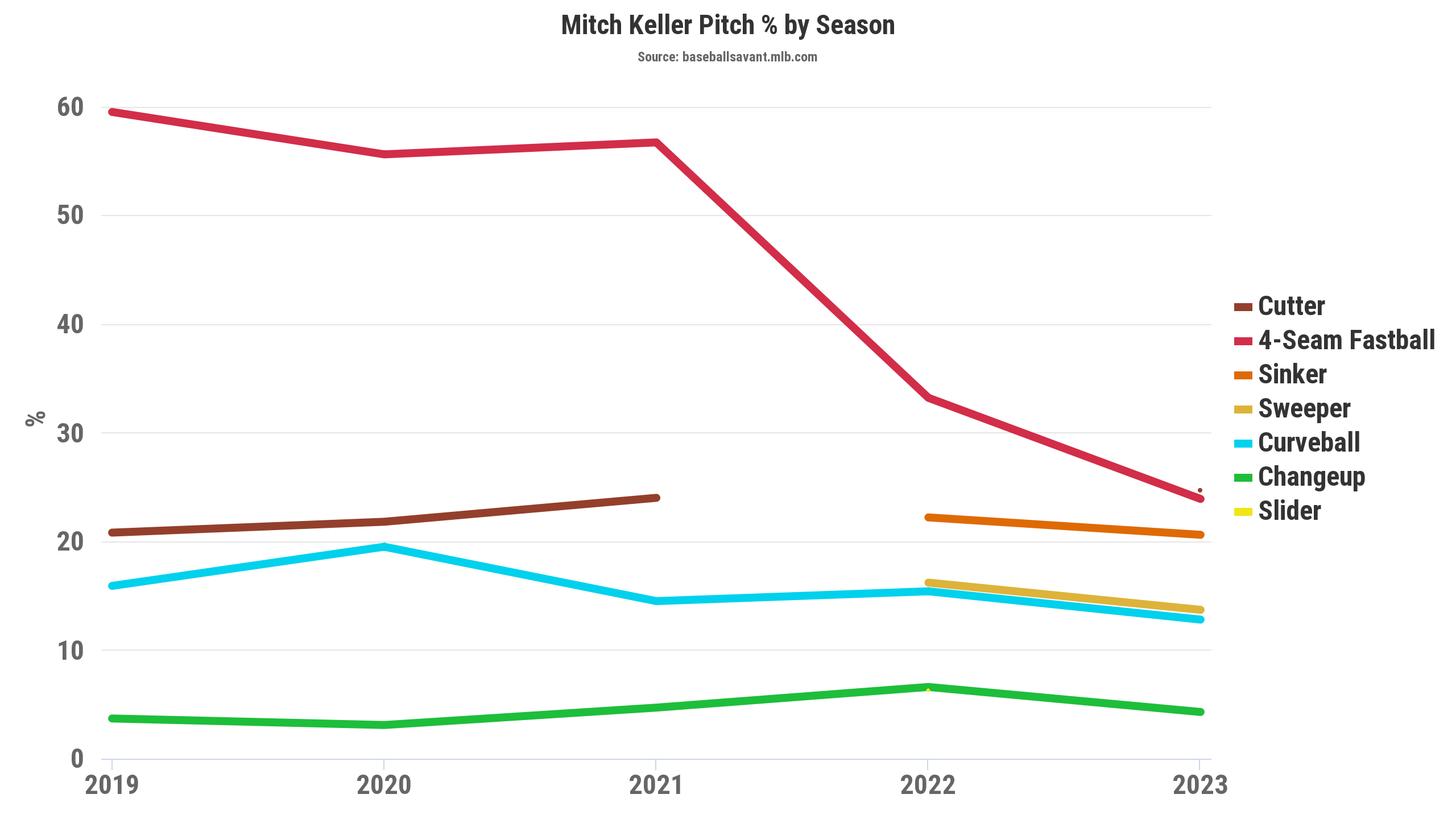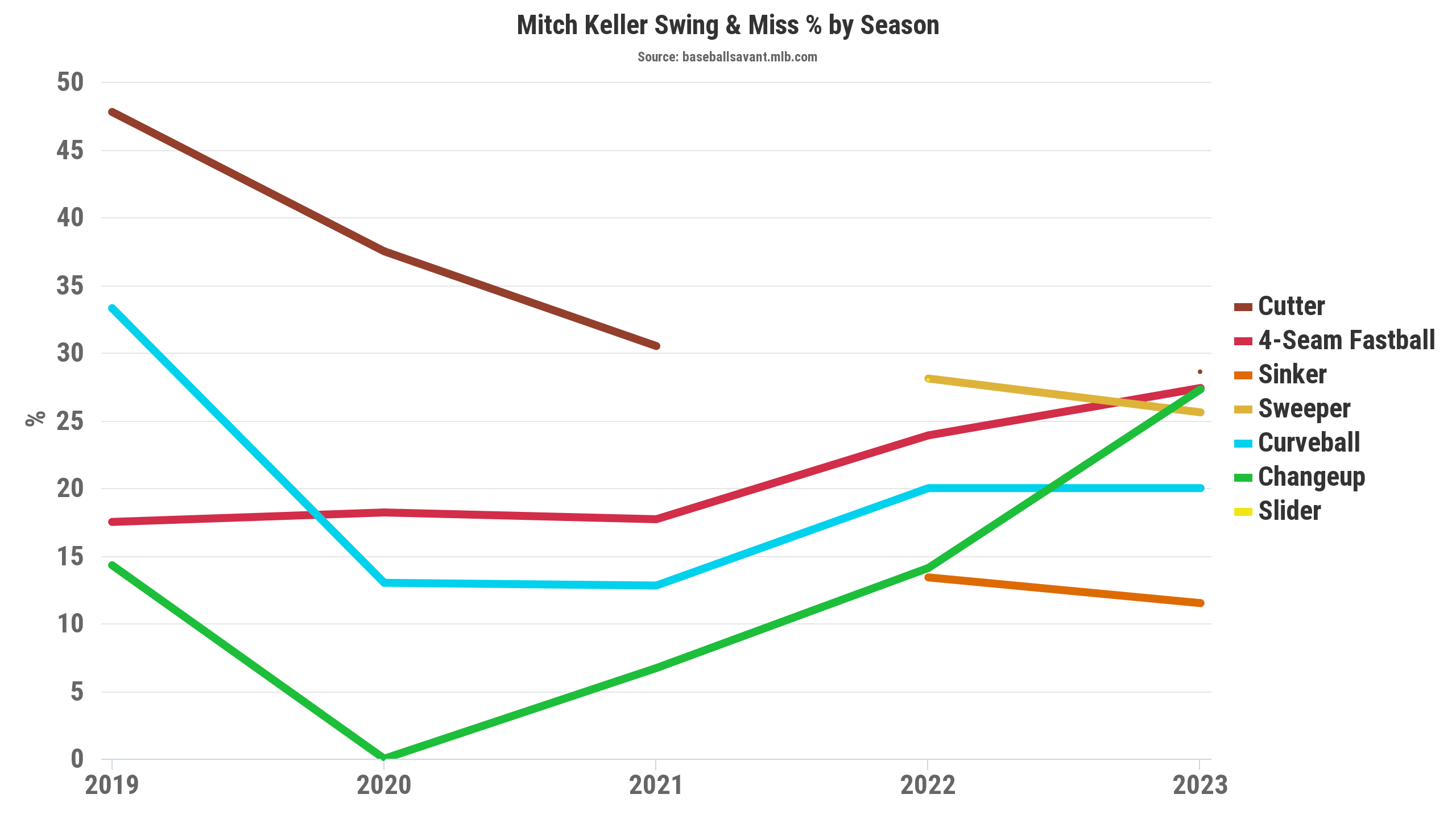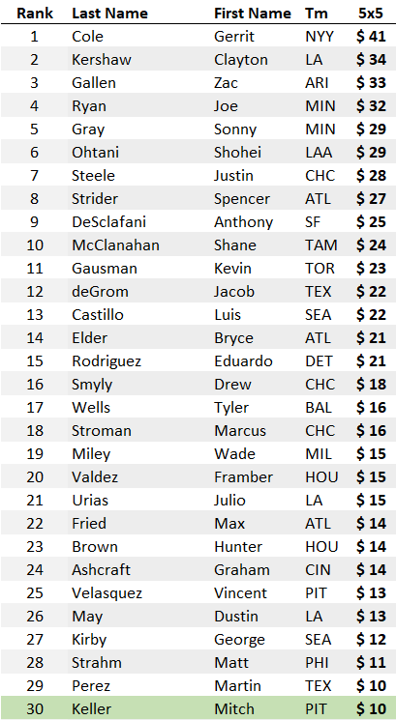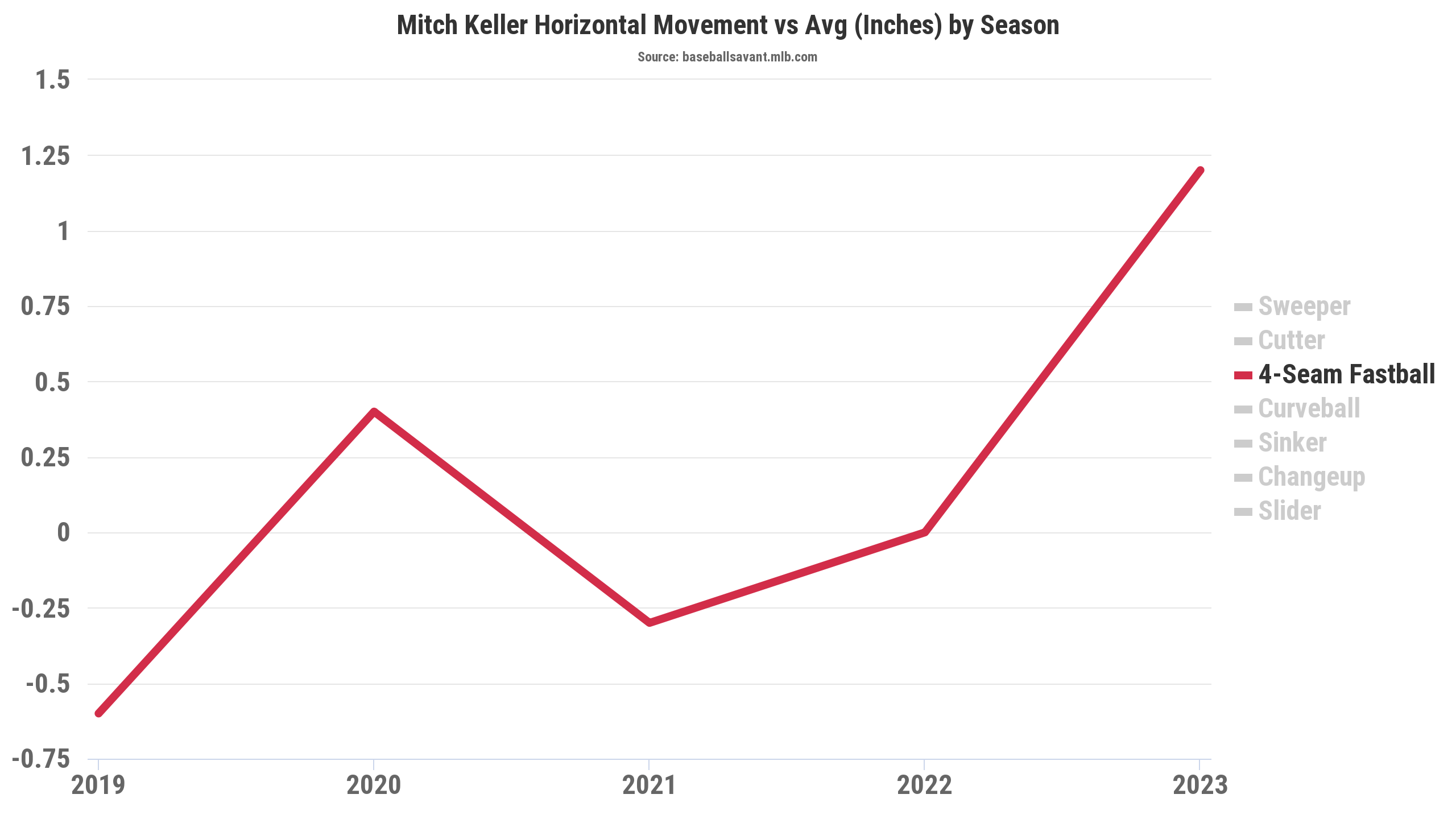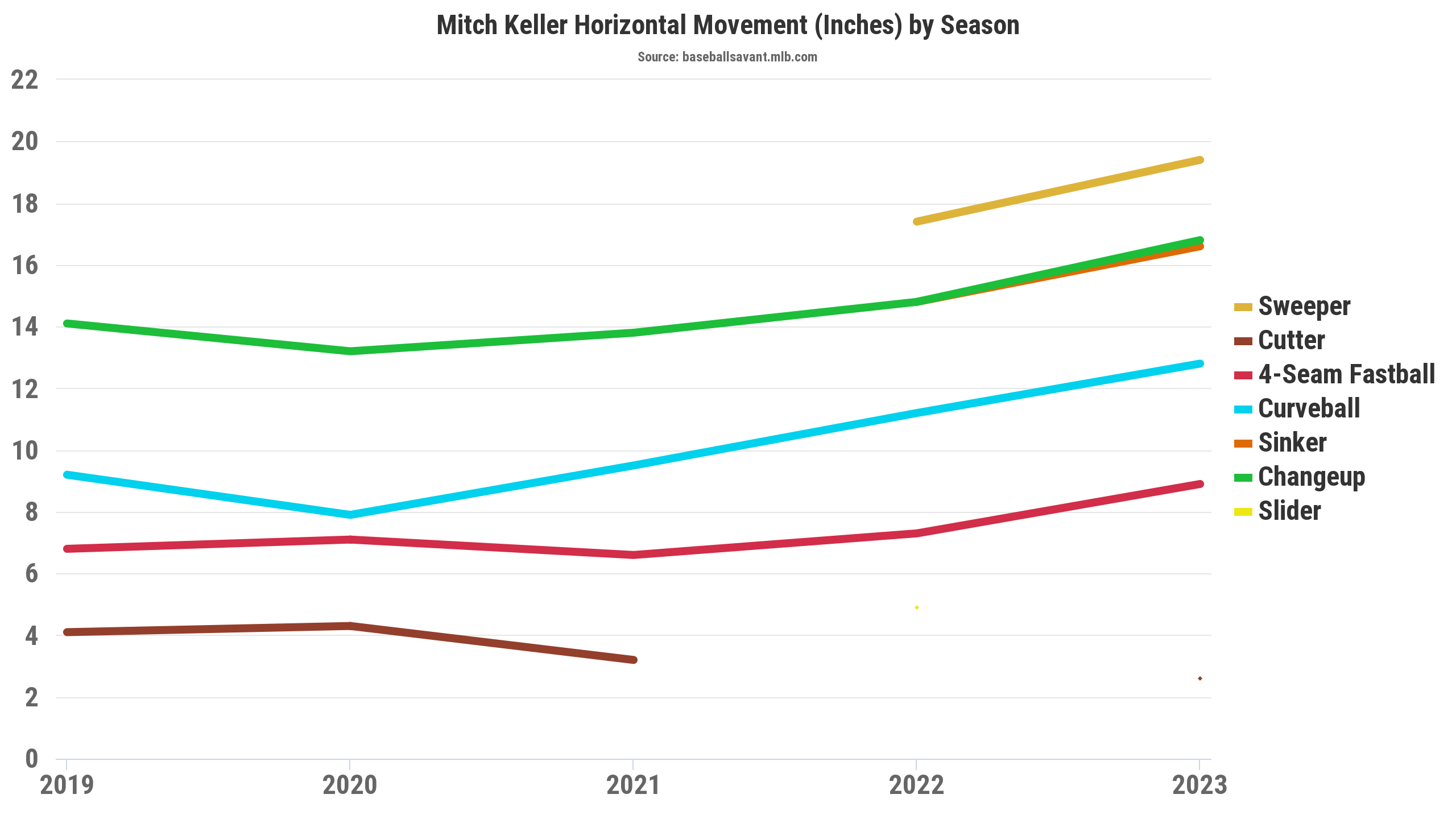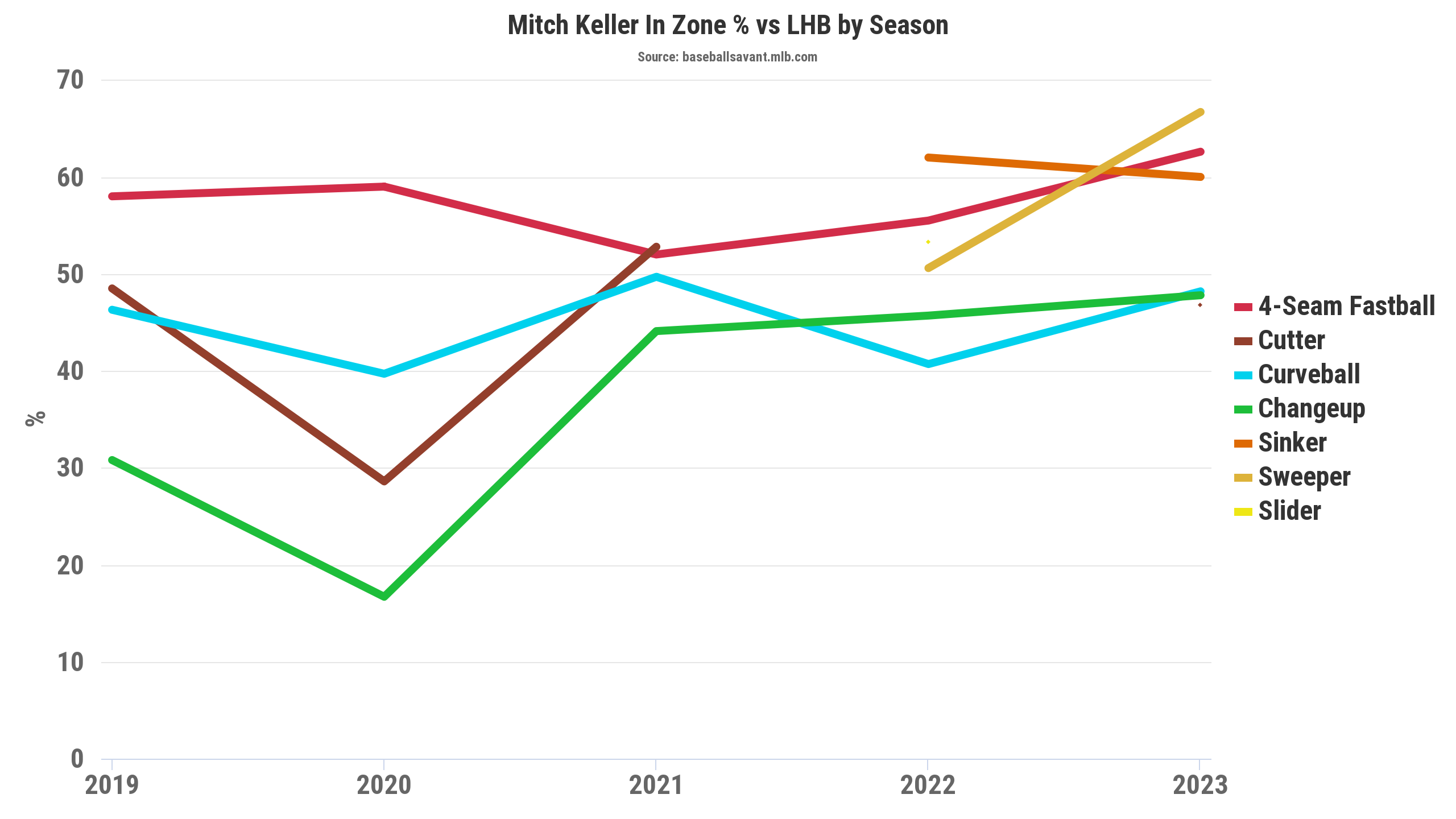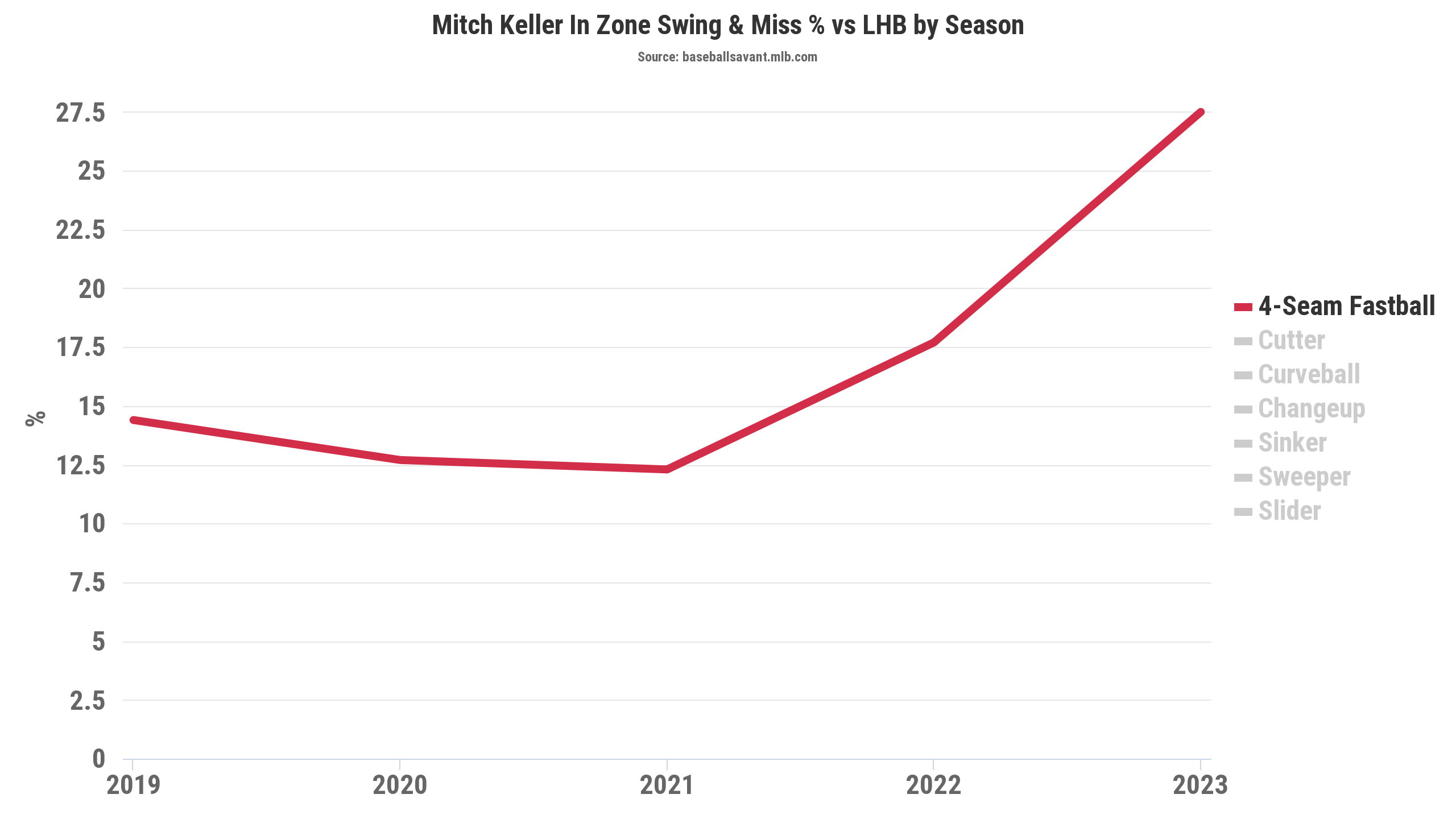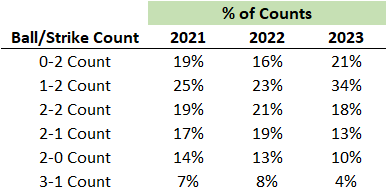
(*) F/F SPOTLIGHT: Mitch Keller
It can be easy to forget a pitcher’s prospect pedigree when his development is not linear.
Take Mitch Keller (RHP, PIT), for example. He went from a three-time top-25 MLB prospect to posting a 7.13 ERA and 1.83 WHIP during his rookie season in 2019.
His next full season came in 2021, and the results were not any better (6.17 ERA, 1.79 WHIP in 101 IP).
Last season was a step forward (3.91 ERA, 1.40 WHIP), but his skills did not move the needle (76 BPV).
Keller’s early results in 2023 are the best of his career. They mark his third straight season of ERA and WHIP improvement if you exclude his small 22-inning sample size from 2020:
Year ERA WHIP ==== ==== ==== 2019 7.13 1.83 2021 6.17 1.79 2022 3.91 1.40 2023 3.53 1.21
At age 27, is this finally the season that Keller turns his prospect pedigree into impactful results?
Take charge of your league in 2023 with a BaseballHQ.com subscription that unlocks articles like these all season long. Winning. Fantasy baseball. Insight.
Background
Mitch Keller was drafted in the 2nd round (64th overall) in the 2014 MLB draft out of a high school in Iowa.
Minor League History
Keller was a so-so prospect until breaking out during the 2017 season, when he posted a 116/32 K/BB in 116 IP.
He climbed through the high minors in 2018 and 2019 and saw his stuff tick up a notch in Triple-A in 2019 (123/35 K/BB in 103 IP), which caused his prospect profile to soar.
2019 MLB Debut
Many fantasy managers ditched Keller after investing in him during his rookie season. However, his ugly 7.13 ERA and 1.83 WHIP may go on record as one of the unluckiest pitching seasons in recent memory. His excellent skills (155 BPV) showed his upside and gave his expected surface stats much more intrigue (3.98 xERA, 1.17 xWHIP).
2021 Debacle
Keller’s next extended look in the majors came in 2021. He became a trendy speculation in skill-savvy leagues given his skilled debut two seasons prior.
So much for that. To say that the market soured on Keller after 2021 would be an understatement. His 6.17 ERA and 1.79 WHIP that season did not have under-the-hood reason for hope this time (48 BPV, 5.09 xERA, 1.45 xWHIP).
Furthermore, Keller’s strong 12.4% swinging strike rate from 2019 dipped all the way down to a below-average 8.9% SwK% in 2021.
The frequency of blue in Keller’s Statcast percentile rankings confirms how bad he was:
2022 Step Forward
Keller started the 2022 season not much different from how he left it the year prior (5.14 ERA, 1.53 WHIP, 58 BPV in first half).
Then he started to make some significant adjustments to his pitch mix. He added a sinker and sweeper into his arsenal:
The sinker helped him add nine points to his groundball rate, while the sweeper became his highest whiff pitch:
Those pitch mix tweaks started to bear fruit late in the season, when Keller’s stats and skills finally showed some life:
Period ERA xERA WHIP BPV ======= ==== ==== ==== === 2022 1H 5.14 4.31 1.53 58 2022 2H 2.93 3.64 1.29 90
Those gains drove us to give Keller a twinge of optimism in the 2023 Baseball Forecaster, even if we had to hedge our bets a bit:
Finally stuck in majors for first full season and results were a mixed bag. But there's some legit reason for hope if you haven't completely lost patience? 1) Added sinker to profile; 2) Bumped up whiffs in 2nd half; 3) Had four 100+ BPV weeks from late August on. There could be a next step, but it's more likely to be league average than a full breakout.
2023 Early Results
Among starting pitchers with 20+ IP, Keller has been a top-30 producer so far in 5x5 leagues:
A glance at his Playerlink page confirms that he’s showing more promise in 2023 than he has at any time in his career since his rookie season:
Swinging Strike Rate
The most impactful gain to Keller’s skills profile in 2023 has been a nearly two-point gain in his swinging strike rate (SwK%).
How has he done it? Like he did with his sinker in 2022, Keller has added a cutter to his arsenal in 2023, a pitch that was his dominant offering back during his 2019 rookie season (47.8% Whiff%). Interestingly, he’s throwing it three mph harder than he has in the past. His cutter now is his most often-used pitch, and it’s generating the most whiffs out of any pitch in his arsenal (28.6% Whiff%):
Mitch Keller, Nasty 92mph Cutter. ✂️ pic.twitter.com/fiaRholO4I
— Rob Friedman (@PitchingNinja) April 11, 2023
However, it's not just the cutter that is driving his early success. It’s his four-seam fastball, which increasingly has become a wipeout offering for him:
Year BA Whiff% Put-Away% ==== ==== ====== ========= 2019 .461 17.5% 18.0% 2021 .313 17.7% 17.6% 2022 .269 23.9% 17.0% 2023 .167 27.4% 31.4%
The difference has been the amount of horizontal movement he is getting on it:
In fact, while the vertical movement on Keller’s pitches is relatively flat vs. last season, he is getting more horizontal break on all of his pitches this season:
It’s likely that the movement added to Keller’s pitches has been the primary driver of his excellent 24.0% hard-hit rate, a mark that ranks in the game’s 97th percentile and has helped him avoid the blowups that have plagued him in the past.
Lefty Bats
Another driver of Keller’s early 2023 success has been his improvements against lefty bats. He keeps getting better and better versus them:
Year OPS K% BB% K-BB% ==== ==== === === ===== 2021 .896 14% 12% 2% 2022 .748 17% 10% 7% 2023 .671 28% 9% 19%
Turns out he is throwing strikes at a much higher rate against LH bats with all of his pitches except his sinker:
It’s not just that Keller is throwing more strikes against lefties. He’s also generating swings-and-misses at a much higher rate against them, and he’s doing it with his primary pitch—again his four-seam fastball:
Ball/Strike Count Frequency
Our research a decade ago revealed that pitchers have better outcomes when they get themselves into more favorable counts.
Let’s look at the extremely favorable and unfavorable ball/strike counts that Keller has found himself in during the past three years:
Among the extreme counts shown above, Keller pitching in a lot more 0-2 and 1-2 counts, and a lot less 2-1, 2-0, and 3-1 counts. Managing the counts in his favor has been another primary driver of his early success and reflects an increased maturity in his approach.
Conclusions
- Mitch Keller’s strong start to the 2023 season is sustainable. His stuff has gotten better, as shown by a two-point jump in his swinging strike rate, as well as a four-point leap in his called + swinging strike rate.
- Those gains have been driven by the additional horizontal movement he is getting on all of his primary pitches, especially his much-more effective four-seam fastball. Re-introducing a cutter has given him another strikeout offering that is keeping hitters off-balance.
- In addition, Keller has improved significantly against lefty bats, plus he is finding himself in friendly ball/strike counts a lot more.
- While Keller might not ever fulfill the SP1 upside he carried as a top prospect five seasons ago, he can settle in as an SP2 or SP3 in many fantasy leagues, generating plenty of profit for fantasy managers who took the plunge and speculated on him again at his favorable market price (414 ADP).


